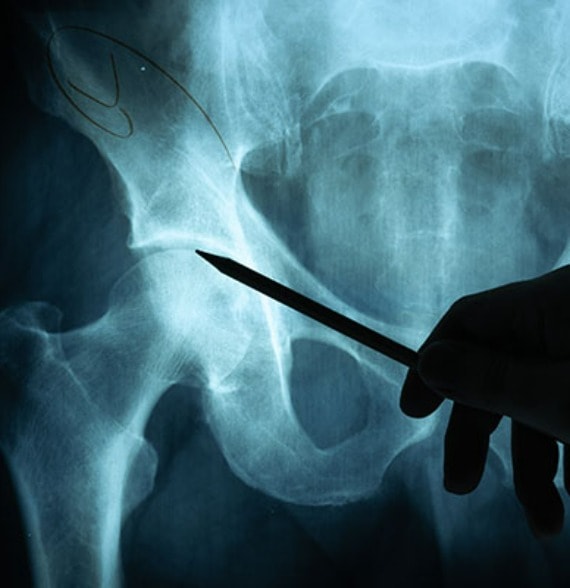Schedule An Appointment With Us
Have You Sustained A Hip Injury Recently?
Consult our MOH-accredited hip fracture specialist for a personalised treatment plan.
A hip fracture is a serious condition and often painful, usually presenting with pain and an inability to move the affected leg or knee. In some cases, the bone may be so weak that a fracture occurs spontaneously during activities like walking or standing.
MBBS
MRCSEd
MMED (Ortho)
FRCSEd

A hip fracture is a break in the upper portion of the femur (thighbone). It can affect one of four areas: the femoral neck, intertrochanteric area, subtrochanteric area, or femoral head.
Hip fractures are primarily caused by the following factors:
The presentation of a hip fracture typically involves a combination of pain and physical limitations:

Diagnosis can help determine the severity of the hip fracture.
Most hip fractures require surgical intervention to reduce the risk of hip complications and to preserve as much of the hip’s function as possible. The choice of surgical procedure depends on the type and location of the fracture, as well as the patient’s age and overall health condition.
Preventing hip fractures involves addressing the various risk factors associated with the condition:
Schedule An Appointment With Us
Consult our MOH-accredited hip fracture specialist for a personalised treatment plan.

MBBS
MRCSEd
MMED (Ortho)
FRCSEd
With over 20 years of experience, Dr Poh Seng Yew is an orthopaedic surgeon specialising in hip, knee, shoulder and elbow surgery, sports medicine, and trauma surgery.




Weekdays: 9.00am – 5.00pm
Saturdays: 9.00am – 1.00pm
Sundays and Public Holidays: Closed
Your injury shouldn’t affect your quality of life or disrupt daily activities. Reach out to our friendly clinic staff today & schedule a consultation.
Recovery from a hip fracture typically takes a few months, influenced by factors such as age, general health, the fracture’s type and severity, surgical success, and rehabilitation progress. During recovery, physical therapy and lifestyle adjustments play a role in healing and regaining mobility.
Complications from hip fractures can include mobility issues, leading to blood clots, infection, pneumonia, muscle atrophy, bedsores, nerve damage, and arthritis. Timely and effective treatment can help minimise these risks.
Walking with a fractured hip is typically extremely painful and can worsen the injury. Should you experience these symptoms, contact our hip specialist immediately to assess the extent of the fracture and to initiate appropriate treatment.
Elderly patients can recover from a hip fracture, especially with prompt, appropriate treatment and a dedicated rehabilitation plan. Recovery may take longer and requires close monitoring and support from our hip specialist.
After hip fracture surgery, follow your hip specialist’s postoperative care plan, which likely includes rest, physical therapy, and possibly using assistive devices such as crutches or a walker. Regular check-ups with your hip specialist can help monitor healing and adjust the treatment plan as needed.